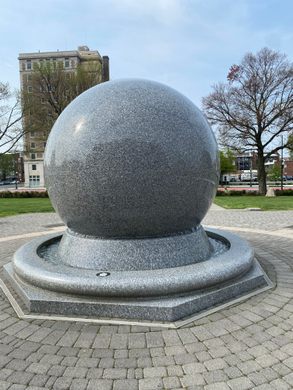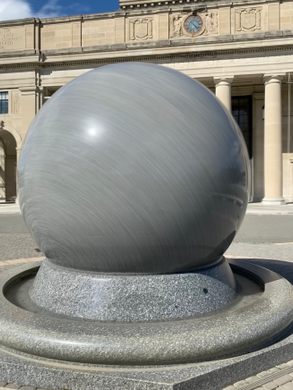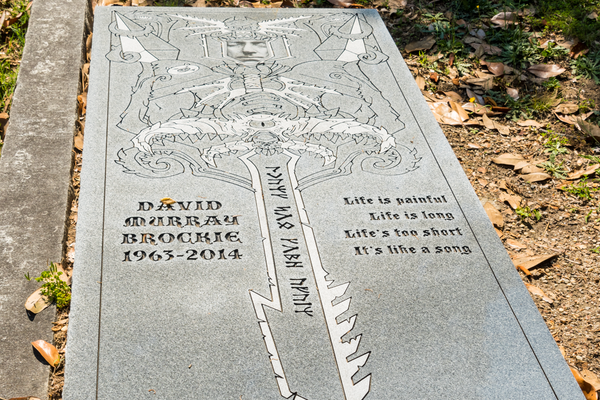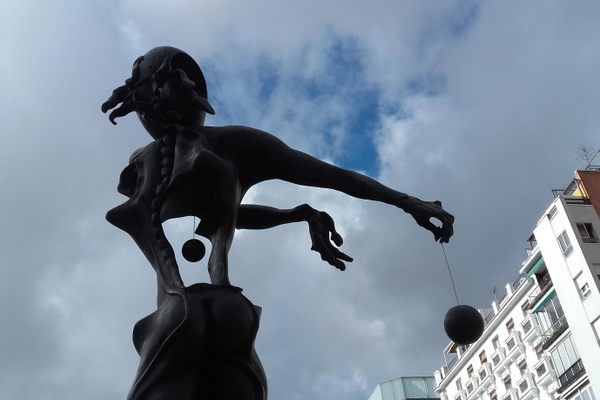AO Edited
The Grand Kugel
This 29-ton granite ball spins around at the slightest touch thanks to a scientific phenomenon.
Whether one is young or old, weak or strong, the massive granite sphere known as the Grand Kugel (the largest construction of its kind in the world) can be spun or stopped with almost no effort thanks to a neat effect of science.
A kugel ball is comprised of a perfectly spherical stone ball that is set into a matching, perfectly concave cup. Water is then forced in from the bottom of the cup creating an evenly distributed, incredibly thin layer of water. The ball, no matter how heavy, can then be moved on the liquid surface as though it weighed nothing at all.
A number of these floating stone spheres can be found around the globe; however the Grand Kugel, installed in 2003, is the largest of these sculptural science experiments in the world. Originally shaped out of South African granite, the ball is almost nine feet in diameter and weighs in at 29 tons. The first stone, which was placed in the pedestal outside of the Science Museum of Virginia, developed a crack that eventually made the shape not perfectly spherical, which in turn caused the massive stone to simply sit in its cradle immovable as the boulder it was. While this unfortunate flaw forced the museum to replace the huge stone, it also perfectly showed how even a slight disruption in the layer of water can disrupt the effect.
The Grand Kugel’s ball has since been replaced, and the miraculous effect restored.
Nearby, 250 feet away, is a smaller kugel representing the Moon, at the same scale, and at a distance to scale. Together they form the Mary Morton Parsons Earth-Moon Sculpture.
At this scale (4.8 million:1), the Sun would be 19.37 miles away.
Know Before You Go
Look carefully, as you'll find the continents of the world all etched out, and you can suddenly feel as if you're controlling rotation of your own personal Planet Earth! The Science Museum of Virginia is found in Broad Street Station, an old, historic train station just outside to the west of Richmond's downtown core. The museum is easiest to find off of Exit 78 on I-95, where you use Arthur Ashe Boulevard to get to West Broad Street if you’re coming from the north and Hermitage Road if you're coming from the south. Take a look inside the museum for all things science while you're there ($14 to get in), and if you have time, swing out back to the old loading platforms where they have the original, much darker Grand Kugel still on display.



































Follow us on Twitter to get the latest on the world's hidden wonders.
Like us on Facebook to get the latest on the world's hidden wonders.
Follow us on Twitter Like us on Facebook